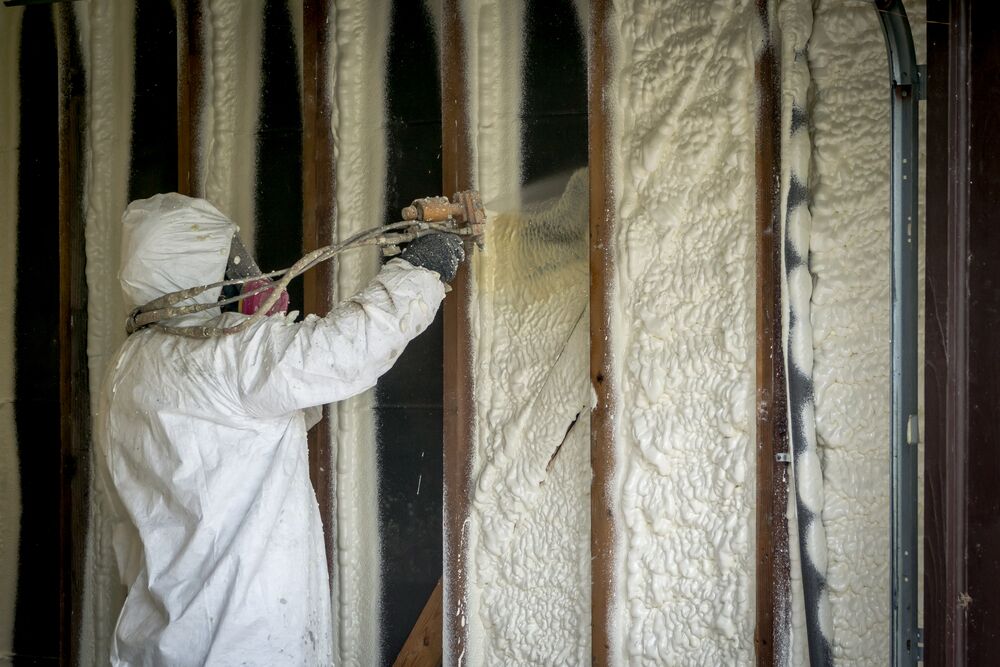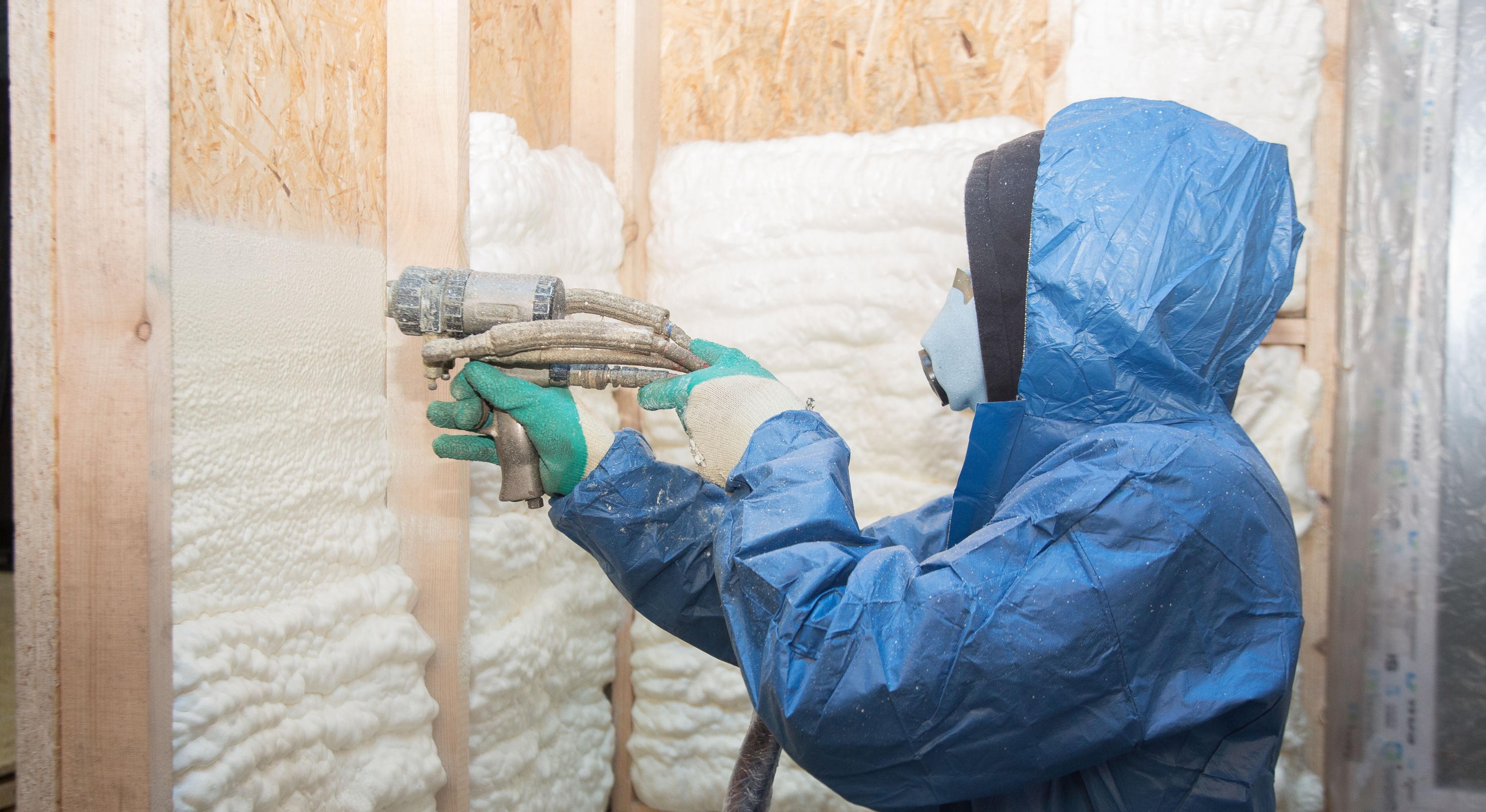Tips for Maintaining Your Spray Foam Insulation for Long-Term Efficiency
Tips for Maintaining Your Spray Foam Insulation for Long-Term Efficiency
Blog Article
Spray Foam: The Ultimate Solution for Air Sealing and Insulation
Spray foam insulation has actually arised as a leading solution for efficient air securing and thermal insulation, offering a special mix of homes that establish it apart from conventional approaches. Its capacity to expand and fill up voids makes it specifically effective in avoiding air leakage, which can dramatically impact energy effectiveness. Nonetheless, recognizing the full scope of its benefits, installation processes, and contrasts with various other insulation kinds is critical for making educated choices. As we explore these aspects, the implications for both new constructions and retrofits come to be significantly substantial. What variables should affect your option?
What Is Spray Foam?
Spray foam is a flexible insulation material that combines the concepts of air sealing and thermal resistance to enhance energy performance in buildings. Composed largely of polyurethane or other similar substances, spray foam is used as a liquid that increases upon call with surfaces, developing a solid, continual layer of insulation. This one-of-a-kind residential or commercial property permits it to fill up gaps, splits, and spaces that traditional insulation products may forget, supplying an exceptional air seal.
There are 2 primary kinds of spray foam: open-cell and closed-cell. Open-cell spray foam is lighter and a lot more flexible, using outstanding audio absorption and a lower R-value per inch - Spray Foam. In comparison, closed-cell spray foam is denser, offering a greater R-value, wetness resistance, and included structural honesty to developing parts
The application process typically includes customized devices, guaranteeing a seamless application that sticks to different substratums, consisting of wood, metal, and concrete. This versatility makes spray foam suitable for both new buildings and retrofitting existing structures. Its capability to develop an airtight barrier dramatically contributes to lowering power usage and boosting indoor air high quality, thereby making it a recommended selection among building contractors and property owners alike.
Benefits of Spray Foam Insulation
One of the most significant advantages of spray foam insulation is its phenomenal ability to create a continuous air barrier, which efficiently reduces energy loss. Unlike conventional insulation materials, spray foam broadens to fill up spaces and fractures, ensuring that air leakage is dramatically minimized. This particular not just improves energy efficiency but also leads to lower energy costs with time.
In addition, spray foam insulation gives remarkable thermal resistance, contributing to a more steady indoor environment. Its high R-value per inch allows for efficient insulation in confined areas, making it perfect for attics, walls, and crawl rooms. In addition, the moisture-resistant residential properties of spray foam assistance stop mold and mold development, advertising healthier living conditions.
One more crucial advantage of spray foam insulation is its sound-dampening top qualities (Spray Foam). It properly minimizes noise transmission in between rooms, developing a quieter and much more comfortable home setting. The toughness of spray foam likewise attracts attention, as it does not droop or settle with time, maintaining its efficiency throughout its lifespan
Just How Spray Foam Works
Recognizing exactly how spray foam insulation functions is vital for appreciating its efficiency in air securing and thermal resistance. Spray foam insulation includes 2 main parts: isocyanate and polyol resin. When these parts are mixed, they go through a chemical response that creates the material to broaden swiftly, creating a thick foam that loads tooth cavities, gaps, and splits.
As the foam increases, it abides by surfaces, developing an impermeable seal that considerably decreases air seepage. This particular makes spray foam insulation highly efficient at protecting against drafts and moisture penetration, which can cause energy loss and damage in time. Furthermore, the closed-cell version of spray foam supplies superior thermal resistance because of its stiff framework, effectively minimizing heat transfer.
The distinct residential or commercial properties of spray foam allow it to adapt irregular surface areas, making certain comprehensive coverage and a seamless barrier. Consequently, spray foam insulation not just boosts energy effectiveness however likewise contributes to improved indoor air quality by reducing the accumulation of pollutants and irritants. Inevitably, recognizing the auto mechanics behind spray foam highlights its function as a remarkable option for insulation and air sealing in both residential and commercial applications.
Setup Process Review

Before installment, the space needs to be adequately cleaned up and prepped, making certain that surfaces are without moisture, dust, and particles. Since impurities can endanger adhesion and overall performance, this step is vital. As soon as the location is prepared, the application entails blending the two elements of the spray foam, which increases upon call and loads gaps effectively.
Trained professionals ought Recommended Site to carry out the installment, making use of customized tools to ensure uniform coverage and optimal density. Safety precautions, including wearing protective equipment and ensuring read this post here correct air flow, are vital during this process. After application, the foam usually remedies quickly, creating a strong obstacle that enhances power efficiency.
Contrasting Spray Foam to Standard Insulation
When evaluating insulation alternatives, spray foam insulation stands out in contrast to conventional products such as fiberglass and cellulose. Unlike fiberglass and cellulose, which can enable air infiltration, spray foam broadens upon application, filling voids and gaps to create an impermeable seal.
Furthermore, spray foam provides a higher R-value per inch than traditional insulation kinds, offering even more reliable thermal resistance in a thinner account. This characteristic is particularly helpful precede with minimal cavity deepness. Spray foam is immune to dampness and mold development, which can be a significant worry with cellulose and fiberglass, particularly in damp settings.
However, spray foam insulation usually lugs a higher in advance cost than its conventional equivalents. Homeowners should consider this first financial investment against long-term energy financial savings and efficiency benefits. Ultimately, while both insulation types offer see it here their objective, spray foam becomes a much more innovative solution for contemporary insulation needs, particularly in terms of air sealing and thermal effectiveness.

Final Thought
In summary, spray foam insulation represents an extremely efficient service for accomplishing optimal air sealing and thermal resistance. Its unique homes, including wetness resistance and sound dampening, make it suitable for various applications in both brand-new building and constructions and retrofitting tasks (Spray Foam). Although the first costs might be greater compared to conventional insulation materials, the long-term advantages, such as considerable energy savings and enhanced indoor air quality, warrant the financial investment and highlight its value in modern-day structure methods.
Spray foam insulation has actually arised as a leading solution for effective air securing and thermal insulation, using a distinct mix of residential properties that set it apart from typical techniques.Spray foam is a functional insulation material that incorporates the concepts of air securing and thermal resistance to improve power effectiveness in structures.When assessing insulation options, spray foam insulation stands out in contrast to conventional products such as fiberglass and cellulose. Ultimately, while both insulation types offer their purpose, spray foam arises as a more innovative remedy for modern-day insulation demands, particularly in terms of air securing and thermal efficiency.
In summary, spray foam insulation stands for a highly effective service for accomplishing optimal air sealing and thermal resistance.
Report this page